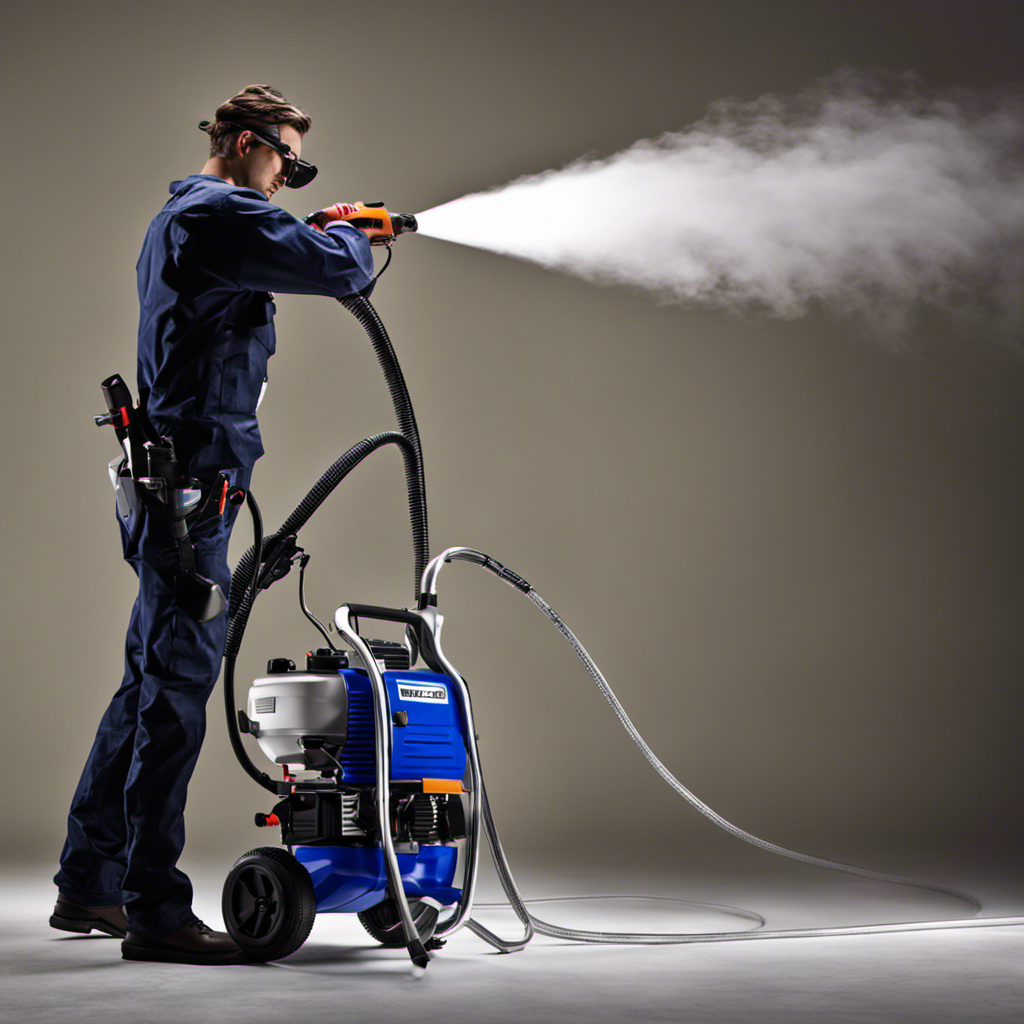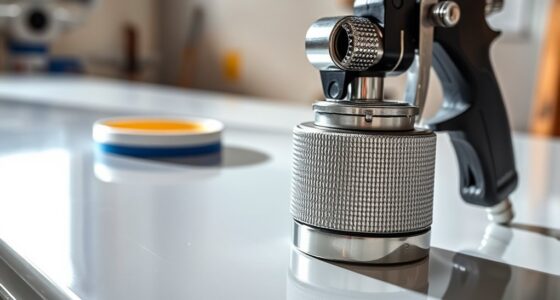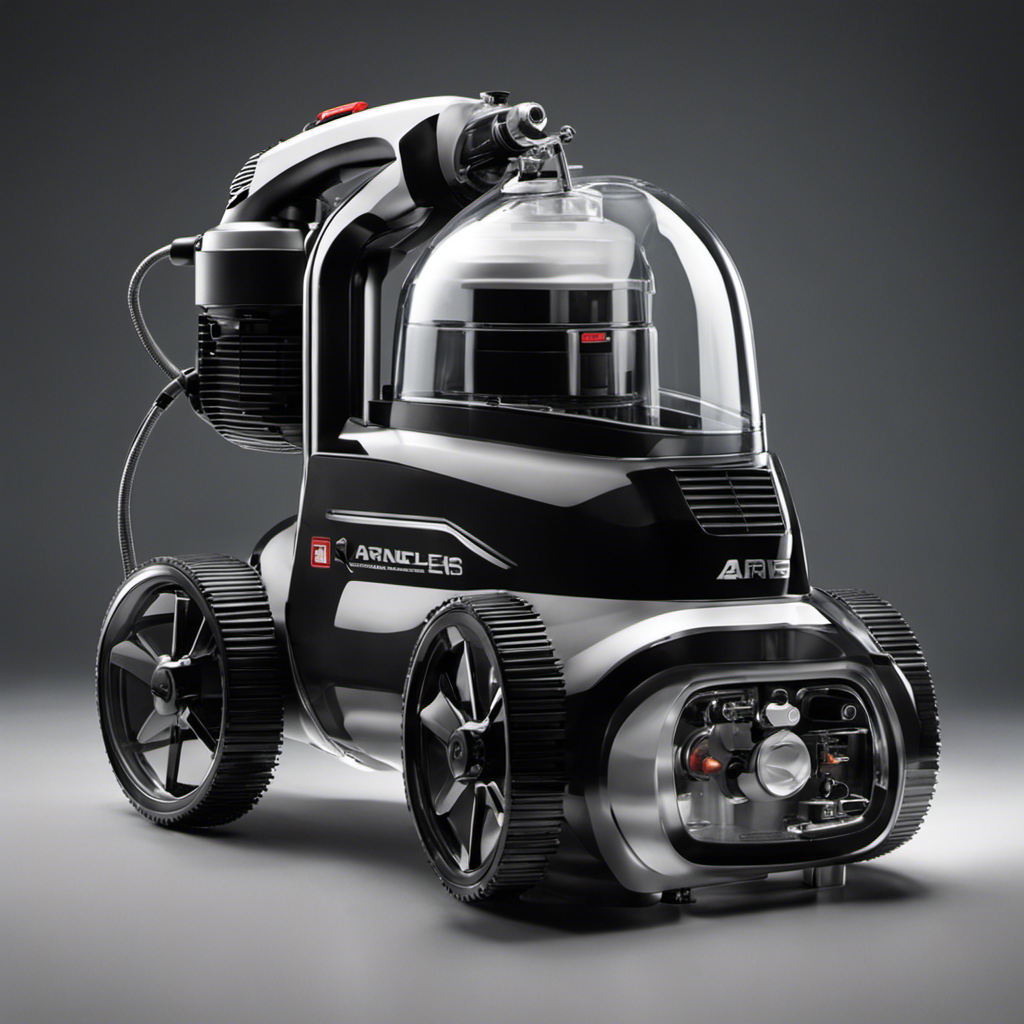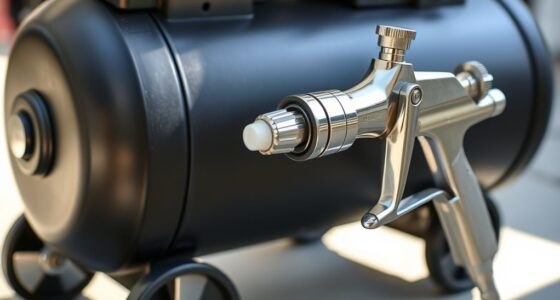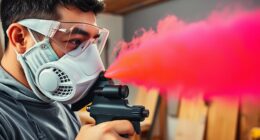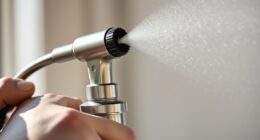Using regular wall paint directly in a paint sprayer isn’t recommended because its thick consistency can clog the equipment, cause uneven spraying, and lead to damage. To spray wall paint effectively, you’ll need to dilute it according to the manufacturer’s instructions, usually with water or solvent. Proper thinning ensures smooth flow and even coverage. If you want to know more about how to prepare your paint for spraying, keep exploring the details below.
Key Takeaways
- Regular wall paint is often too thick for sprayers and requires thinning for proper application.
- Thinning wall paint with water or solvent improves flow and prevents clogging in spray equipment.
- Check the sprayer manufacturer’s guidelines to ensure compatibility with wall paint or its thinned version.
- Conduct a small test spray to verify the paint’s sprayability and even coverage before large jobs.
- Not all wall paints are suitable for spraying; some formulations may clog or damage equipment if not properly prepared.
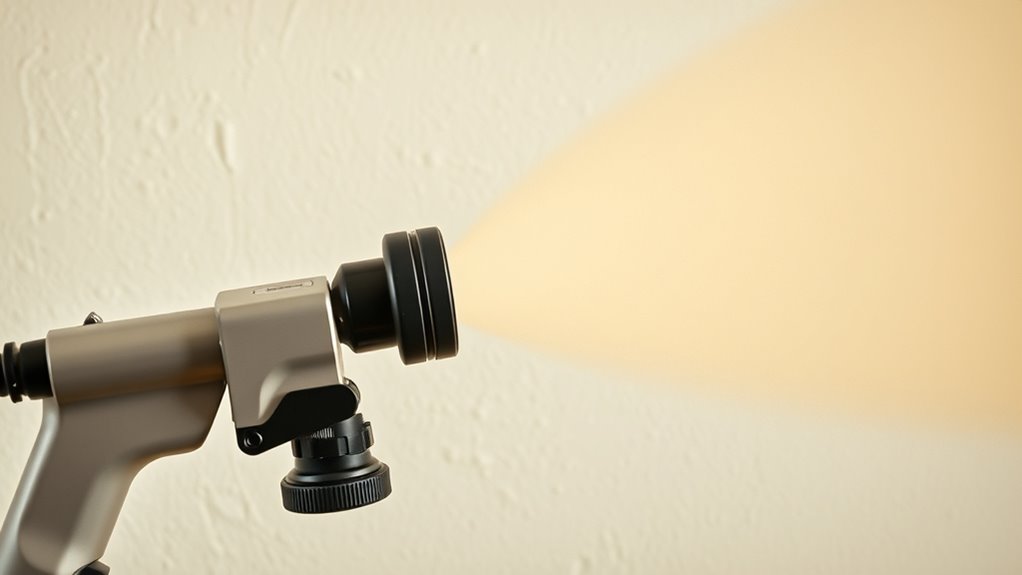
Using wall paint in a paint sprayer can considerably speed up your painting project and result in a smooth, professional finish. But before you start, it’s important to contemplate whether your regular wall paint is suitable for spraying. The key factors here are paint thickness and sprayer compatibility. Not all paints are created equal, and understanding these elements can save you time, effort, and potential damage to your equipment.
First, let’s talk about paint thickness. Wall paints are typically formulated to be applied with brushes or rollers, which means they tend to be thicker than what spray guns are designed to handle. If your paint is too thick, it can clog the sprayer nozzle, cause uneven spraying, or lead to spattering. To prevent this, you may need to thin your paint to achieve the right consistency. Most spray guns recommend a specific paint viscosity, often measured with a viscosity cup, to ensure smooth flow. If your paint is too thick straight out of the can, it’s best to thin it according to the manufacturer’s instructions, usually with water for latex paints or appropriate solvents for oil-based paints. Additionally, paint viscosity plays a crucial role in achieving a quality finish when using a sprayer.
Next, consider sprayer compatibility. Different sprayers have varying requirements and capabilities. Some are designed for thicker paints, while others are only compatible with thinner coatings. Check the specifications of your sprayer—if it’s a HVLP (High Volume Low Pressure) sprayer or an airless model, the manufacturer’s guidelines will specify the types of paint it can handle. Using regular wall paint without examining compatibility can damage your equipment or produce subpar results. Also, some sprayers have adjustable settings that allow you to control flow rate and spray pattern, which can help accommodate different paint consistencies.
If you’re unsure about your paint’s suitability, do a small test patch first. Thin a small amount of paint, load it into the sprayer, and see how it sprays. If it flows smoothly and produces an even coat, you’re good to go. If it clogs or sprays unevenly, you’ll need to adjust the paint’s viscosity or consider using a different type of paint specifically formulated for spraying.
Frequently Asked Questions
Can I Dilute Regular Wall Paint for My Sprayer?
You can dilute regular wall paint for your sprayer to improve paint consistency and guarantee better sprayer compatibility. Add water gradually until the paint reaches a smooth, pumpable consistency, but avoid making it too runny. Always test a small amount first. Keep in mind, some paints may not work well with certain sprayers, so check your sprayer’s instructions and the paint’s label to prevent clogs or uneven application.
What Types of Wall Paint Work Best in a Sprayer?
When choosing wall paint for your sprayer, opt for paints with the right paint viscosity to guarantee smooth application. Latex and acrylic paints typically work best because they flow easily and spray evenly. To improve your spray technique, consider thinning thicker paints slightly. Always test your paint first, adjusting the viscosity as needed, so you achieve a consistent spray pattern and avoid clogs or uneven coverage.
How Do I Prevent Clogs When Spraying Wall Paint?
To prevent clogs when spraying wall paint, you should focus on proper brush techniques and maintaining the right paint consistency. Always strain your paint to remove debris and thicken it if needed, avoiding overly thick mixtures. Use smooth, consistent motions to apply the paint evenly, preventing buildup. Regularly flush your sprayer and clean the nozzle to keep it clear, ensuring a smooth, clog-free spraying process.
Is Special Equipment Needed for Spraying Wall Paint?
Think of your paint sprayer as a fine-tuned instrument—you’ll need the right tools for perfect harmony. Special equipment isn’t strictly necessary, but ensuring airless sprayer compatibility is key. You might need to adjust paint viscosity for smooth spraying and prevent clogs. Using the proper nozzle and thinning your wall paint helps it flow effortlessly. So, with a few tweaks, your regular wall paint can sing in your sprayer without missing a beat.
How Do I Clean My Sprayer After Using Wall Paint?
After you finish cleaning wall paint from your paint sprayer, proper maintenance is key. You should thoroughly flush the system with water or the appropriate solvent, depending on the paint type. Disassemble parts if needed and clean all components to prevent clogs and guarantee smooth future use. Regular paint sprayer maintenance, including cleaning wall paint residue, helps prolong your equipment’s life and maintains peak performance.
Conclusion
So, yes, you can use regular wall paint in a paint sprayer, but be prepared to do some thinning and strain it well first. Think of it like trying to squeeze a thick toothpaste—if you don’t prepare it properly, it’ll clog up your tools. With the right prep, your painting project will flow smoothly. Just remember, a little effort upfront can make all the difference in achieving a flawless finish without running into issues down the line.
Franz came aboard the Paint Sprayer Zone team with a background in both journalism and home renovation. His articulate writing style, combined with a passion for DIY projects, makes him an invaluable asset. Franz has a knack for breaking down technical jargon into easy-to-understand content, ensuring that even the most novice of readers can grasp the complexities of paint sprayers.


